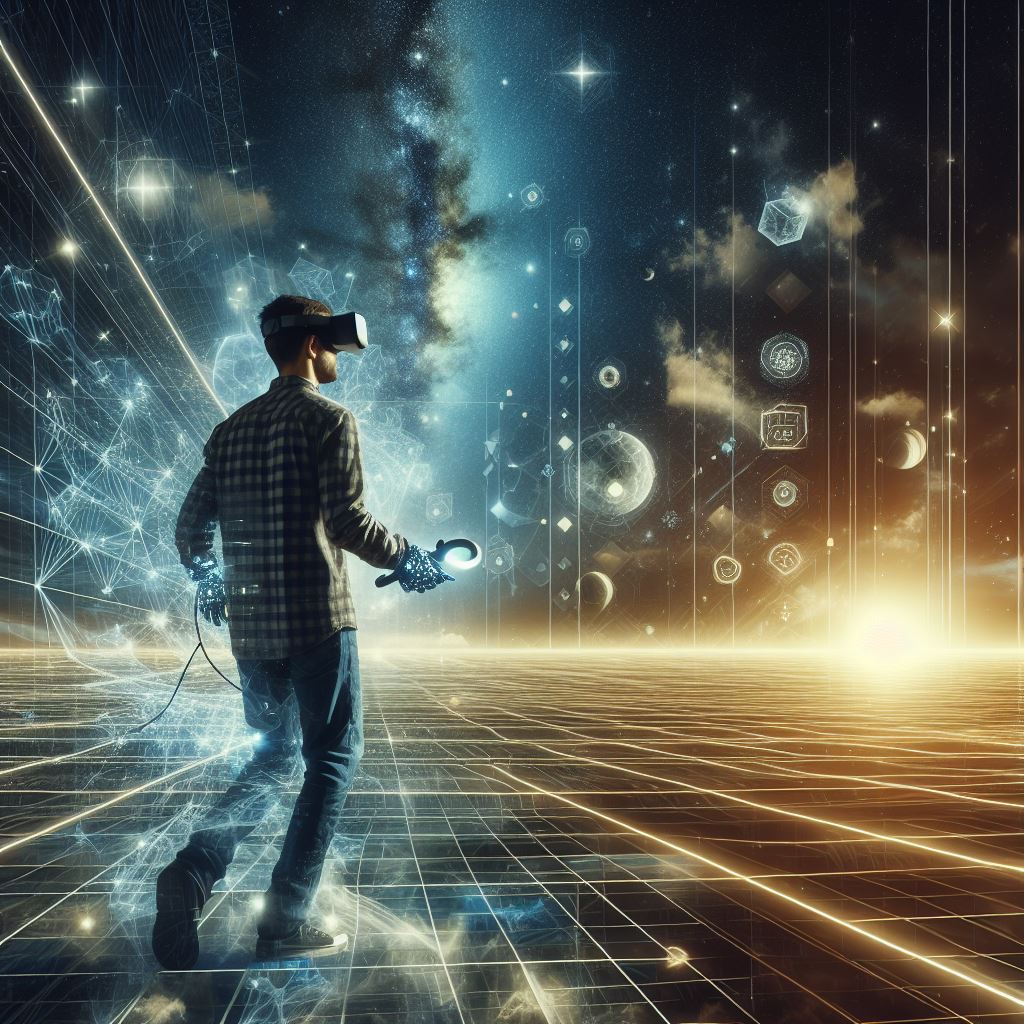Experience the future today with Mixed Reality: Transforming Human-Computer Interaction!
In the past few decades, technological advancements have revolutionized the way we interact with the digital world. From desktop computers to smartphones, we’ve seen the evolution of digital devices, and now we’re entering a new era of human-computer interaction with mixed reality (MR). In this article, we’ll explore what mixed reality is, its applications, and its potential impact on various industries.
Table of Contents
What is Mixed Reality?

Mixed reality is an umbrella term that encompasses both augmented reality (AR) and virtual reality (VR). It is a technology that combines the physical and digital worlds, allowing users to interact with both simultaneously. Unlike VR, which is a completely immersive experience, MR enables users to interact with the digital world while remaining in the real world.
How Does Mixed Reality Work?
Mixed reality technology uses a combination of sensors, cameras, and other hardware to blend digital elements with the real world. The device used for MR typically includes a transparent visor or glasses that allow the user to see both the real world and digital elements simultaneously. The digital elements are projected onto the real world, creating a seamless blend of the physical and digital worlds.
Applications of Mixed Reality
Mixed reality has a wide range of applications in various industries, including:
- Gaming and Entertainment
Mixed reality provides a new level of immersion and interactivity in gaming and entertainment. It enables people to engage with the real world while also entering a virtual one.MR can also be used to create interactive experiences in theme parks, museums, and other entertainment venues. - Education and Training
Mixed reality can revolutionize education and training by providing immersive, interactive learning experiences. For example, medical students can use MR to practice surgeries in a virtual environment, providing a safe and risk-free learning experience. - Architecture and Design
Mixed reality can be used to create 3D models of buildings and other structures, allowing architects and designers to visualize their designs in a more realistic way. This can save time and money by identifying design flaws before construction begins. - Healthcare
Mixed reality can be used in healthcare to provide patients with a more personalized, interactive experience. For example, doctors can use MR to show patients a 3D model of their organs, providing a better understanding of their condition.
Potential Impact of Mixed Reality
Mixed reality has the potential to transform the way we interact with the digital world. It can create new opportunities for immersive, interactive experiences in various industries. MR can also improve efficiency and productivity in fields such as architecture and design by providing a more realistic visualization of designs.
However, the adoption of mixed reality is still in its early stages, and there are challenges that need to be addressed. For example, the cost of MR devices is still high, making it inaccessible to many consumers. Additionally, there are concerns around privacy and security when using MR devices.
Mixed reality is an exciting technology that has the potential to revolutionize the way we interact with the digital world. It has applications in various industries, from gaming and entertainment to healthcare and education. While there are challenges that need to be addressed, the potential benefits of mixed reality are significant.
FAQs
- What is the difference between augmented reality and mixed reality?
Augmented reality overlays digital elements onto the real world, while mixed reality blends digital elements with the real world.
- What are some examples of mixed reality devices?
Some examples of mixed reality devices include Microsoft HoloLens, Magic Leap One, and Oculus Quest 2.
- How is mixed reality being used in education?
Mixed reality is being used in education to provide immersive, interactive learning experiences. For example, students can use MR to explore historical sites or experience scientific concepts in a more engaging way.
- What are the privacy concerns surrounding mixed reality?
There are concerns around privacy when using MR devices. For example, MR devices may collect and store personal data such as user movements, voice, and biometric information. There is also a risk of unauthorized access to the digital content that is displayed on the device.
- What are the limitations of mixed reality?
One limitation of mixed reality is that the technology is still in its early stages, and there is a lack of standardization in the industry. Additionally, the cost of MR devices is still high, making it inaccessible to many consumers. Finally, there are challenges in creating realistic and accurate digital content that can seamlessly blend with the real world.
Overall, mixed reality is a promising technology that has the potential to revolutionize the way we interact with the digital world. While there are challenges that need to be addressed, the future of mixed reality looks bright, and we can expect to see more applications and advancements in the coming years.
Discover more from TechResider Submit AI Tool
Subscribe to get the latest posts sent to your email.


